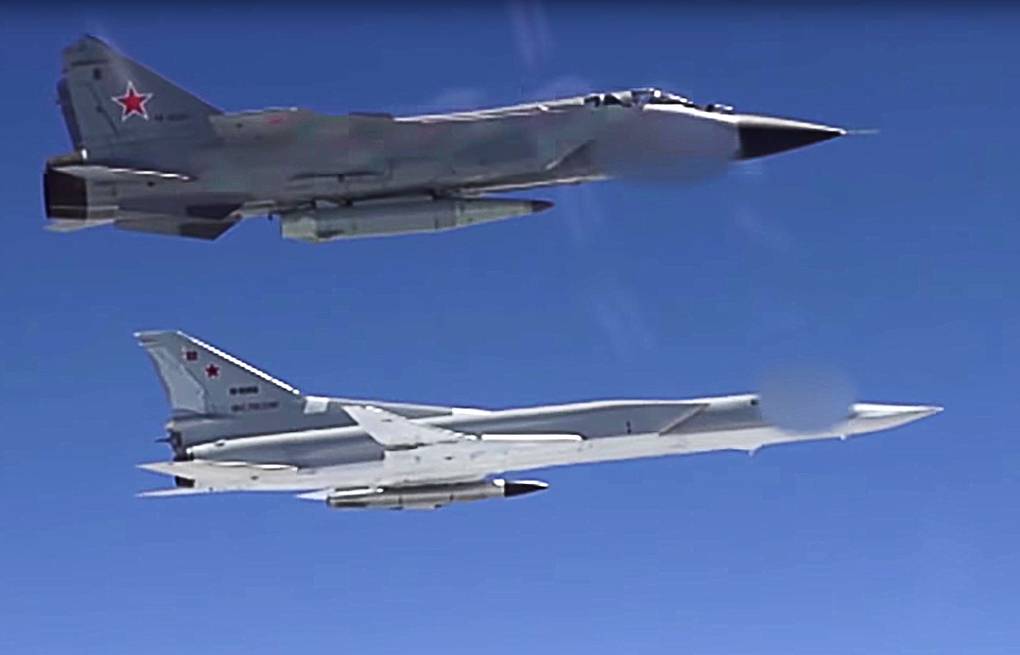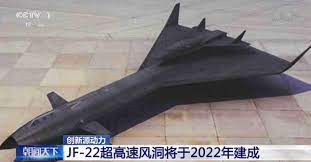Когда дело доходит до гиперзвукового оружия, почти равные соперники США, Россия и Китай лидируют в гонке. Этот факт в сочетании с пониманием того, что Пекин делает большие ставки на искусственный интеллект (ИИ) для модернизации своих вооруженных сил, приводит к совершенно новой возможности — потенциальному использованию ИИ для обеспечения точности гиперзвукового оружия.

A Carrier Killer
A Kh-47M2 Kinzhal ALBM being carried by a Mikoyan MiG-31K interceptor [The Kh-47M2 Kinzhal (Х-47М2 Кинжал) is a Russian nuclear-capable hypersonic aero-ballistic air-to-surface missile. It has a claimed range of more than 2,000 km, Mach 12 speed (4.1 km/s), and an ability to perform evasive maneuvers at every stage of its flight.
It can carry both conventional and nuclear warheads and can be launched from Tu-22M3 bombers or MiG-31K interceptors. The missile is designed to hit NATO warships posing a threat to strategic missile systems in European Russia and to destroy NATO missile defence systems, ballistic missile defense ships and land objects close to the Russian borders. It is allegedly designed to overcome any known or planned US air or missile defense systems including MIM-104 Patriot, Terminal High Altitude Area Defense and Aegis Combat System.
The high speed of the Kinzhal gives it better target-penetration characteristics than lighter, slower cruise-missiles. With advanced maneuvering capabilities, high precision and hypersonic speed, some sources give it the name "carrier killer" due to its ability to disable and possibly even sink a 100,000 ton supercarrier with a single strike. Kinzhal missiles have destroyed an underground weapons depot of the Ukrainian armed forces in Deliatyn on 18 March 2022 and a fuel depot in Konstantinovka the next day. US President Joe Biden confirmed "It's almost impossible to stop it".
It has been deployed at airbases in Russia's Southern Military District and Western Military District ].
AI on its way to replacing humans in hypersonic weapon design: Chinese study
AI can write the weapon’s software “on the fly”, while it moves at hypervelocity, through a unique flight control algorithm.
Veteran hypersonic weapons adviser leads research on an artificial intelligence system that trains itself to better analyse wind tunnel experiments
In China, as hypersonic research advances, the amount of experimental data to be processed and analysed has risen significantly.
AI could help interpret hypersonic flight experiments and aid the design of new weapons and planes, say Chinese researchers.
AI could help interpret hypersonic flight experiments and aid the design of new weapons and planes, say Chinese researchers. Photo: Handout

Chinese researchers have made significant progress in building an artificial intelligence (AI) system that can design new hypersonic weapons by itself, according to the team behind the project.
The machine could identify most of the shock waves occurring in wind tunnel tests, even though it was not instructed on what to look for, the researchers said.
Without human intervention, the AI machine built a knowledge base of its own to aid the development of new engines for hypersonic missiles or planes that could travel longer distances at much faster speeds, according to its creator.
The research team, led by professor Le Jialing with China Aerodynamics Research and Development Centre in Mianyang, Sichuan, published its findings on March 16 in the Journal of Propulsion Technology, a peer-reviewed publication run by China’s aerospace defence industry.
Resources
China’s ‘Mind-Boggling’ Claims – New AI System Can Design Hypersonic Weapons By Itself Without Human Intervention https://eurasiantimes.com/chin...
КАК МЫ СОЗДАЕМ НИИИ [НАСТОЯЩИЙ И ИСТИННЫЙ ИСКУССТВЕННЫЙ ИНТЕЛЛЕКТ]








Оценили 11 человек
12 кармы